#products imported from India to Canada
Explore tagged Tumblr posts
Text
Top 10 Imports from India to Canada in 2023: Key Insights and Economic Impact
Canada and India share a growing trade relationship that has expanded notably in recent years. With Canada’s increasing reliance on imports to meet domestic demands, goods from India have become essential across multiple sectors, including pharmaceuticals, machinery, and consumer goods. In 2023, Canada imported a total of $5.58 billion worth of products from India, reflecting the ongoing trade growth between these two economies. This article delves into the top imports from India to Canada, examines the role of key Canadian importers, and highlights the impact of these imports on Canada’s economy.

1. Pharmaceutical Products
India is one of the largest exporters of affordable, high-quality pharmaceutical products worldwide, and Canada’s reliance on these imports has grown significantly. In 2023-24, Canada imported pharmaceutical goods valued at approximately $425.33 million from India, marking it as the top import category. Canadian healthcare benefits from the competitive pricing and accessibility of Indian medications, which also ensure the availability of a wide range of drugs for the Canadian population. This partnership supports Canada's healthcare industry by providing access to essential and innovative treatments, making Indian pharmaceutical imports a vital aspect of Canada’s healthcare strategy.
2. Machinery, Nuclear Reactors, and Boilers
Canada’s demand for industrial machinery, nuclear reactors, and boilers from India amounted to $283.28 million. This import category includes machinery used in manufacturing, construction, and energy sectors, providing Canada with technologically advanced and cost-effective alternatives. These imports are crucial for supporting various industries in Canada, particularly as the country looks to modernize its infrastructure and industrial capabilities. Additionally, affordable machinery imports help Canadian businesses enhance productivity and competitiveness on a global scale.
3. Articles of Iron or Steel
Articles of iron or steel, worth $246.21 million, make up another significant category of imports from India. These items include steel pipes, construction materials, and various machinery components required for Canada’s construction, automotive, and energy sectors. The availability of Indian iron and steel products supports Canadian infrastructure development and allows the country to meet the demands of its growing industrial sector, while also managing costs by sourcing competitively from India.
4. Electrical and Electronic Equipment
Canada imported electrical and electronic equipment worth $242.11 million from India in 2023. These products include advanced machinery used in manufacturing, consumer electronics, and components essential for the telecommunications industry. Importing these high-quality electronic products from India provides Canada access to modern technology at competitive prices, helping meet both industrial and consumer demands.
5. Pearls, Precious Stones, Metals, and Coins
With a trade value of $186.83 million, India’s exports of precious metals and gems like gold and diamonds hold a significant position in Canadian imports. These products are essential for Canada’s jewelry and electronics industries. As demand for luxury items and high-quality materials rises, Canadian importers rely on India’s well-established gemstone and precious metals industry to supply products for commercial use and consumer markets.
6. Organic Chemicals
India supplies a substantial amount of organic chemicals, with $179.86 million worth imported by Canada in 2023. These chemicals serve as raw materials for Canada’s chemical, pharmaceutical, and agricultural industries. Importing organic chemicals from India enables Canadian companies to manufacture diverse products, from medicines to fertilizers, supporting industrial growth and the agricultural sector.
7. Optical, Photographic, Technical, and Medical Apparatus
Canada imported approximately $116.52 million worth of optical, photographic, technical, and medical apparatus from India. These include healthcare appliances, surgical instruments, and diagnostic equipment that support Canada’s medical infrastructure. By importing these medical devices, Canada enhances its healthcare facilities with modern, reliable equipment, providing crucial support for patient care and medical research.
8. Rubber Products
With imports totaling $115.35 million, rubber products from India are essential for various Canadian industries. Rubber is widely used in manufacturing and automotive applications, including tires, gaskets, and other industrial components. This continuous demand for rubber products reinforces the trade relationship between Canada and India, contributing to the resilience of Canada’s manufacturing and automotive sectors.
9. Plastics
Canada imported $113.82 million worth of plastics from India in 2023. Plastics play a pivotal role in consumer and industrial products, from packaging materials to building supplies. By importing these items, Canada ensures a steady supply of affordable plastics for both everyday use and specialized industrial applications. This access to cost-effective plastics supports diverse sectors, including construction, healthcare, and consumer goods manufacturing.
10. Coffee, Tea, Mate, and Spices
India is a well-known supplier of tea, coffee, spices, and other aromatic products, and Canada imported $80.21 million worth of these items in 2023. The popularity of Indian tea and spices among Canadian consumers highlights Canada’s multicultural and diverse taste preferences. These imports also reflect the importance of India as a supplier of high-quality, exotic food products that cater to Canada’s culinary and cultural diversity.
Canada’s Import Economy and the Role of Indian Goods
Canada’s economy is robust and diverse, with a strong service sector and significant reliance on imports to meet domestic needs. In 2023, Canada’s imports of goods and services accounted for 33.71% of its GDP, underscoring the importance of trade in the country’s economic structure. While Canada’s primary trading partners include the United States, China, Mexico, and Germany, India has carved out a vital role, providing a variety of products that support Canada’s industrial, healthcare, and consumer sectors.
Canadian Importers from India
A range of prominent Canadian companies sources goods from India, ensuring that local markets have access to high-quality imported products. Some of these top importers include:
20/20 Accessory Source Ltd.
Amazon.com, Inc.
Canadian Tire Corporation Limited
First Chemical Limited
Belkin, Inc.
Globe Commercial Products Inc.
These companies help meet the increasing demand for Indian products in Canada, ranging from pharmaceuticals and machinery to consumer electronics and household goods.
How to Find Importers in Canada
For businesses looking to enter the Canadian market, having access to reliable import data and a list of Canadian importers is essential. Specialized databases, such as those provided by Exportimportdata.in, offer detailed trade information, including HS codes and updated lists of Canadian importers. By utilizing these resources, companies can stay informed about market trends, compliance with trade regulations, and specific Canadian demand for imported goods.
Final Thoughts
The economic relationship between Canada and India is characterized by a steady flow of diverse goods that supports both nations’ economies. Canada’s reliance on imports from India across multiple sectors demonstrates the mutually beneficial nature of this trade relationship. Products such as pharmaceuticals, machinery, and electronic equipment from India not only help to meet Canada’s industrial and consumer demands but also contribute to Canada’s economic resilience and growth.
As Canadian industries continue to require affordable and reliable resources, India remains a crucial trade partner. Importing goods from India supports various sectors within Canada, from healthcare to manufacturing, by providing access to high-quality products at competitive prices. This trend reflects the broader dynamics of global trade, where strategic partnerships and a reliance on international supply chains play a pivotal role in strengthening national economies.
For companies and businesses interested in Canadian import data or looking to establish trade relationships with Canadian importers, resources like Exportimportdata.in provide valuable insights and up-to-date information on the Canadian market, ensuring that businesses remain informed and ready to leverage new opportunities in international trade.
#Canada imports from India#import from India to Canada#list of export items from india to Canada#products imported from India to Canada#export items from india to Canada#importing goods from india to Canada#importing clothes from india to Canada
0 notes
Text
Explore the comprehensive Canada Import Products List for 2024 with Seair Exim Solutions' Ultimate Guide. Discover key insights, trends, and essential information to navigate the Canadian import market effectively. Stay ahead in your import ventures with expert analysis and valuable resources.
#canada import products list#canada import data#canada importers database#canada import products#exports from india to canada#canada import export data
0 notes
Text
Writing Notes: Culture

There are many definitions of culture and it is used in different ways by different people.
Culture - may be defined as patterns of learned and shared behavior that are cumulative and transmitted across generations.
Patterns
There are systematic and predictable ways of behavior or thinking across members of a culture.
Emerge from adapting, sharing, and storing cultural information.
Can be both similar and different across cultures.
Example: In both Canada and India it is considered polite to bring a small gift to a host’s home. In Canada, it is more common to bring a bottle of wine and for the gift to be opened right away. In India, by contrast, it is more common to bring sweets, and often the gift is set aside to be opened later.
Sharing
Culture is the product of people sharing with one another.
Humans cooperate and share knowledge and skills with other members of their networks.
The ways they share, and the content of what they share, helps make up culture.
Example: Older adults remember a time when long-distance friendships were maintained through letters that arrived in the mail every few months. Contemporary youth culture accomplishes the same goal through the use of instant text messages on smartphones.
Learned
Behaviors, values, norms are acquired through a process known as enculturation that begins with parents and caregivers, because they are the primary influence on young children.
Caregivers teach kids, both directly and by example, about how to behave and how the world works.
They encourage children to be polite, reminding them, for instance, to say “Thank you.” They teach kids how to dress in a way that is appropriate for the culture.
Culture teaches us what behaviors and emotions are appropriate or expected in different situations.
Example: In some societies, it is considered appropriate to conceal anger. Instead of expressing their feelings outright, people purse their lips, furrow their brows, and say little. In other cultures, however, it is appropriate to express anger. In these places, people are more likely to bare their teeth, furrow their brows, point or gesture, and yell (Matsumoto, Yoo, & Chung, 2010).
Learned: Rituals
Members of a culture also engage in rituals which are used to teach people what is important.
Example 1: Young people who are interested in becoming Buddhist monks often have to endure rituals that help them shed feelings of specialness or superiority—feelings that run counter to Buddhist doctrine. To do this, they might be required to wash their teacher’s feet, scrub toilets, or perform other menial tasks.
Example 2: Similarly, many Jewish adolescents go through the process of bar and bat mitzvah. This is a ceremonial reading from scripture that requires the study of Hebrew and, when completed, signals that the youth is ready for full participation in public worship.
These examples help to illustrate the concept of enculturation.
Cumulative
Cultural knowledge is information that is “stored” and then the learning grows across generations.
We understand more about the world today than we did 200 years ago, but that doesn’t mean the culture from long ago has been erased.
Example: Members of the Haida culture, a First Nations people in British Columbia, Canada are able to profit from both ancient and modern experiences. They might employ traditional fishing practices and wisdom stories while also using modern technologies and services.
Transmission
Passing of new knowledge and traditions of culture from one generation to the next, as well as across other cultures is cultural transmission.
In everyday life, the most common way cultural norms are transmitted is within each individuals’ home life.
Each family has its own, distinct culture under the big picture of each given society and/or nation.
With every family, there are traditions that are kept alive.
The way each family acts and communicates with others and an overall view of life are passed down.
Parents teach their kids every day how to behave and act by their actions alone.
Outside of the family, culture can be transmitted at various social institutions like places of worship, schools, even shopping centers are places where enculturation happens and is transmitted.
Understanding culture as a learned pattern of thoughts and behaviors is interesting for several reasons:
It highlights the ways groups can come into conflict with one another. Members of different cultures simply learn different ways of behaving. Teenagers today interact with technologies, like a smartphone, using a different set of rules than people who are in their 40s, 50s, or 60s. Older adults might find texting in the middle of a face-to-face conversation rude while younger people often do not. These differences can sometimes become politicized and a source of tension between groups. One example of this is Muslim women who wear a hijab, or headscarf. Non-Muslims do not follow this practice, so occasional misunderstandings arise about the appropriateness of the tradition.
Understanding that culture is learned is important because it means that people can adopt an appreciation of patterns of behavior that are different than their own.
Understanding that culture is learned can be helpful in developing self-awareness. For instance, people from the United States might not even be aware of the fact that their attitudes about public nudity are influenced by their cultural learning. While women often go topless on beaches in Europe and women living a traditional tribal existence in places like the South Pacific also go topless, it is illegal for women in some of the United States to do so. These cultural norms for modesty that are reflected in government laws and policies also enter the discourse on social issues such as the appropriateness of breastfeeding in public. Understanding that your preferences are, in many cases, the products of cultural learning might empower you to revise them if doing so will lead to a better life for you or others.
Humans use culture to adapt and transform the world they live in and you should think of the word culture as a conceptual tool rather than as a uniform, static definition.
Culture changes through interactions with individuals, media, and technology, just to name a few.
Culture generally changes for one of 2 reasons:
Selective transmission or
to meet changing needs.
This means that when a village or culture is met with new challenges, for example, a loss of a food source, they must change the way they live.
It could also include forced relocation from ancestral domains due to external or internal forces.
Example: In the United States, tens of thousands Native Americans were forced to migrate from their ancestral lands to reservations established by the United States government so it could acquire lands rich with natural resources. The forced migration resulted in death, disease and many cultural changes for the Native Americans as they adjusted to new ecology and way of life.
Source ⚜ More: On Psychology ⚜ Writing Notes & References
#writing notes#culture#psychology#writeblr#writing reference#dark academia#spilled ink#literature#writers on tumblr#writing prompt#poetry#poets on tumblr#creative writing#writing resources
166 notes
·
View notes
Note
this might be an odd question but like, ive read imperialism (by our mutual friend) and so i think i get what imperialism is economically with the banks and colonialism in the sense of primary and secondary product imports/export, but for a given nation, how should one figure out if they're an imperialist power, or an imperialised country? like should i just look at an imports/exports list?

The thing about New Zealand in particular (as well as Australia) is that it's a settler colony. It's not unusual for colonial nations to export primary products (although I would say New Zealand's exports are not particularly dominated by raw materials and that New Zealand does a good amount of domestic processing). What is unusual is for an ostensibly "independent" colony like New Zealand or Australia (or Canada or the US) to retain such close mutual ties to their former colonizer or to engage in colonial activities of their own (which New Zealand and Australia certainly have done in the Pacific).
The English plantation-style settler colonies that build the bulk of the "core Anglosphere" were unique in the way that, rather than relying on the labor of the native population like many other colonies would, they instead sought to settle the land using imported labor. This created a strong cultural and political connection between Britain and its settler colonies, which did not happen in other former British colonies such as India.
New Zealand has been a minor player among the first world nations, to be sure, with less colonial presence than Australia and no major cartels on the level of BHP, however its close ties with the rest of the core Anglosphere and Australia in particular have prevented any economic decline or marginalization that might otherwise have occurred due to global imperialism (and it could definitely be said that without China's rapid industrialization and modernization and thus the "China boom" that occurred in ANZ as a result of China's demand for raw materials, we would be seeing a much more dire economic situation in both countries.)
It is not enough to simply look at a list of imports and exports to determine whether or not a country is part of the imperial core. You have to also look at a country's economic and political relationships with other countries. The core Anglosphere as a whole is currently so deeply economically and politically interconnected that it is hard to see any one of them exiting the imperial core on their own any time soon.
Just look at the alliances New Zealand is a part of:

New Zealand is clearly not being treated as an imperialized nation. The Maori and Pasifika are certainly the victims of colonialism, just as the indigenous peoples of Australia and North America are, but the core Anglosphere remains a fairly cohesive empire even if the US has stolen the spotlight from Britain.
Some good supplemental reading to Lenin's Imperialism is Kwame Nkrumah's "Neo-Colonialism". It is more relevant to the post-WW2 economic organization of the world and goes into detail about how the imperial core economically exploits the third world.
36 notes
·
View notes
Text
How will Tariffs effect the Historical Costume Community?
How will Tariffs effect the Historical Costume Community?
Maybe it was divine inspiration that I chose the summer of 2025 to semi-retire, because textiles are about to increase, ya'll! - so are avocados, strawberries, and fruits and vegetables from Mexico; electronics (from China) - like your cell phones and computers, televisions. But it doesn't stop there: building supplies, car parts, clothing, toys, medical supplies, medications, and much, much more is about to increase!
Why?
Because of Trump's brilliant economic plan to implement tariffs on countries like China, Mexico, and Canada on "Day one," to quote him directly.
Yes, that was sarcasm. For those who haven't been following the dire warnings economists worldwide and in America were shouting to the rooftops, i.e., that tariffs will cause economic disaster for many companies in the USA, and you still think the cost of gas and eggs and groceries are going to decrease in the Trump administration, boy oh boy are ya'll gonna have a huge awakening come January 20, 2025.
The way tariffs work is like this: American companies, who purchase goods outside of America, "are the ones who pay the tariffs" - NOT the companies sending goods to America for American consumers to buy. American companies will be paying MORE to import goods from other companies, and that increase will be passed on to the American people. These large corporations, who have already been recording record breaking profits since 2020, will use Trump’s tariffs as an excuse to raise their prices even more! – because there are no regulations on what they can charge the public. ALSO, they will be receiving more tax cuts, while the rest of us, especially the middle class who already carry the burden of the majority of the taxes in the USA, will see an increase in our taxes. These tariffs will cost us an additional $2500 a year per household. That doesn't sound like much, but it adds up, especially for many who are already barely scraping by - myself included.
How will these tariffs impact the historical costume community specifically?
While Mexico, China and Canada are our top exports (places we buy from), the following countries are ALSO popular sources that USA consumers import textiles and clothing:
Vietnam
India
Bangladesh
Indonesia
Honduras
The majority of fine woolen textiles are exported from the UK. The cost of wool will also be affected, with costs going up from 10 to 20%. Maybe that doesn’t sound like much, but when you’re already paying $30 to $40 (and more) a yard for a good wool product an additional $3 to $6 per yard will carry a punch on my client’s budgets.
Companies like Silk Baron, who import silk fabrics in bulk from places like India, will have to increase their prices by a minimum of 20%. The price of silk is already $20 to $30 or more a yard through Silk Baron, and we can expect their prices to increase to $22 to $24, or $33 to $36 a yard.
Fabric-Store.com, used to only charge $12 a yard for linen, but beginning in 2020 they have raised their prices every year and are now charging $18 a yard. The impacts of tariffs will only increase these costs.
Trump’s tariffs on China will raise prices by 60%, and 10 to 20% to other countries who import goods to the USA. Tariffs impact consumers, NOT the companies who produce the products and ship them to American businesses.
Walmart and Lowes have already rung a warning nell that their prices are about to increase. According to an article by Reuters, a Walmart spokesperson stated, “We're concerned that significantly increased tariffs could lead to increased costs for our customers at a time when they are still feeling the remnants of inflation"…"Trump has vowed to make tariffs, which are a fraction of U.S. tax collections, central to his economic agenda. Executives have been increasingly fielding questions on the subject, with many noting ongoing efforts to continue to diversify their supply chains, particularly away from China, Trump's top target.”
Additionally, the CFO of Lowe’s, Brandon Silk, said: "Roughly 40% of our cost of goods sold are sourced outside of the U.S., and that includes both direct imports and national brands through our vendor partners"…"And as we look at the potential impacts (of tariffs), it certainly would add to product costs." These tariffs will impact the cost of appliances and building supplies, which means the cost of new construction will increase.
Grocery stores, who were already price gouging consumers since the pandemic, are beginning to raise their prices. By the way, the President of the United States (or the Vice President) does not control the prices that big corporations charge consumers, it’s greed on the part of these companies like Albertson’s, Fred Meyer, etc., who set the prices. Harris planned to institute regulations to control their greed and lower the cost of groceries, etc., but Trump’s “tariffs,’ WILL absolutely affect American consumers.
Furthermore, voters, pissed off about Biden’s handling of Hamas, voted for Trump in protest. By the way, Trump and his entire administration are 100% pro-Israel, and support the atrocities Netanyahu has perpetrated against innocent civilians who have nothing to do with the terrorists of Hamas.
Voting is the equivalent to an open book examination in college or high school. All the information needed to educate yourselves on the issues are available at your fingertips, but you have to open the damn book! Voters, angry about Israel’s genocide of the Palestinian people, chose not to educate themselves about what control or influence on world politics a Vice President actually HAS. Harris was not pro-Israel, but publicly stated she was against Palestinian and Israeli aggression.
When textile and supply prices go up, those increases affect the cost for costumers. The tariffs that will be implemented will increase costs by 60% from any goods purchased from China. For my business, this will impact such items as “freshwater pearls,” that I use on my costume embellishment. China is the world’s largest exporter of pearls, which are “grown” or farmed in that country.
Coates embroidery thread, which I use in my embroidery machines, are based in Mexico. With Trump’s tariffs the cost will go up 20%. A spool of Coates gold metallic thread is $12.99 at JoAnns. That will increase by roughly $2.60 per spool.
Faux Baleen from Germany, used in corsetry, will go up anywhere from 10 to 20%.
American Duchess, who contracts with shoemakers in China to produce their historical shoes will have to raise their prices by 60%!!
Buttons, thread, fabric, notions, everything you can imagine used in the creation of historical costumes are imported from China. Tariffs will have a noticeable impact on the entire historical costume community, which is already an expensive hobby.
At a time when American’s are paying more for goods and groceries than other countries, not only will tariffs impact the economy, but Trump and the Republicans as outlined in Project 2025, plan to cut Social Security by no less than 20%, but they also are planning to do away with it entirely, to include social security disability, which millions of disabled and retired Americans depend on to exist.
In a word, and I don’t give a flying fig that I’m bringing politics into historical costuming, you voted for more inflation and higher cost of goods. It would behoove all ya’ll among the younger generations to use Google and research how the stock market crash of 1929 happened, and how tariffs played a significant role in exacerbating the Great Depression.
The Smoot-Hawley Tariff Act, passed in June 1930, was a key factor. This act raised tariffs on thousands of imported goods in an attempt to protect American industries and farmers, which had unintended consequences such as:
Retaliation by Other Countries: Many countries responded by imposing their own tariffs on American goods, which led to a significant decline in international trade.
Reduction in Exports and Imports: American exports and imports fell by about 67% during the Great Depression. This decline in trade worsened the economic downturn.
Global Economic Impact: The tariffs contributed to a global economic slowdown, making it harder for the U.S. and other countries to recover from the depression.
These consequences ended in joblessness, as companies closed down. Read about the how the banks went under, people lost their jobs, resulting in widespread foreclosures, and the rise in shanty towns to house millions of homeless who were once productive members among the middle class.
Is this hyperbole? No! If you do not educate yourselves, history will repeat itself. Trump’s tariffs will impact Americans on a catastrophic level, as well as impact the global economy.
So, next time, maybe study for the “open book test” rather than sourcing your information from word of mouth like, you know, Fox News.
Hang on to your butts, it’s gonna get rough for all of us.
P.S: If you voted for him, and your fee-fees are hurt by this article, don't you dare say one hateful thing in my blog or my Facebook page or you will be blocked.
32 notes
·
View notes
Text
Guest essay by Gregory Wrightstone
As the love affair with so-called green energy cools and “net zero” commitments to eliminate “carbon emissions” wane, we see glimmers of acknowledgment for the benefits of carbon dioxide. That’s right: More people are beginning to understand that the gas – widely demonized as a pollutant endangering Earth with excessive heat – is a life-giving substance needed in greater amounts.
U.S. voters know that President-elect Donald Trump has declared the Green New Deal a “scam” and promises to return common sense to environmental regulations and energy development. His return to office rests partly on that pledge.
In Europe, German politicians whose green fetish has produced economic decline face serious electoral challenges. And developing countries like India ignore “decarbonization” promises to aggressively develop coal mines and import more of the fuel to spur growth and eradicate poverty.
Less frequently reported is the story of carbon dioxide emissions greening the Earth and boosting crop production. Educating the public on the benefits of carbon dioxide is the mission of the CO2 Coalition, which I lead. We sponsor speakers and publish scientifically based materials for adults and children. Much of the information is about the role of CO2 as a beneficial greenhouse gas in moderating the extremes between daytime and nighttime temperatures and as a photosynthetic plant food.
“Fossil Fuels Are the Greenest Energy Sources” by Dr. Indur Goklany is an example of our work. Did you know that up to 50% of the globe has experienced an increase in vegetation and that 70% of the greening is attributed to plant fertilization by carbon dioxide emissions from fossil fuels? Or that nearly 200,000 square kilometers of the southern Sahara have been converted to a lush grassland from desert?
Few have heard that doubling atmospheric CO2 from its current concentration of 420 ppm would significantly increase agricultural productivity and have little effect on the climate.
It appears that some of this knowledge has reached Canada because Alberta’s ruling Unified Conservative Party (UCP) recently approved a resolution that promotes the salutary effects of CO2 and endorses an outright rejection of the national government’s net zero policy.
“It is estimated that (atmospheric) CO2 levels need to be above 150 ppm (parts per million) to ensure the survival of plant life,” says the proposal for a resolution eventually adopted by the party. “The Earth needs more CO2 to support life and to increase plant yields, both of which will contribute to the health and prosperity of all Albertans.”
The UCP calls for abandoning CO2’sdesignation as a pollutant and for recognizing the gas as “a foundational nutrient for all life on Earth.”
19 notes
·
View notes
Text
good god girl, maybe some of us are not vegan because we eat chicken like once in three months?? Would reduction not be a more productive goal of vegan activism than outright banning? Like if your arguments are that animals are being eaten, then you’re being unrealistic about the entire actual concept of the food chain. Humans are omnivores, you do not need to change that to achieve your goals.
A vegan lifestyle is also entirely the product of your geographical location. If you live somewhere that shit does not grow, what are you going to do?? I just think about the difference between food options in India and Canada, for example. India: between the tropics (tropics and equator even, in fact). All-year-round sun, there’s pretty much always stuff growing. Different kinds of land will mean you can grow everything from staples like rice and wheat to vegetables, fruits and plantation crops. It’s reflected in the cuisines: Indian food has a much, much wider offering of vegetarian food, and many more Indians have restricted diets that more or less overlap with vegetarianism. Because crops grows. Locally.
Canada. Harvest in the fall, from November to March, your fields are practically unusable. Compare the prices of fresh produce in (and now I’m being generous to give you a highly populated, non-remote province here for an example) Ontario. Ontario has farms where in the fall you get fresh autumn vegetables and fruits. You’ll also get them in larger quantities. It is way cheaper, fresher and also uses less energy and fuel to transport the vegetables like 50 km from farm to market.
Come the winter and nothing grows. If you look at most vegetables you’ll find on store shelves in December or February, and most of it is either imported from warmer regions of the US (often the case for chains that are in both countries) or from South American countries (sometimes SA -> USA -> Canada). The importing has to go through cross-country customs, had to be driven for days, is less fresh or rich in nutrients by the time you get it, and is more expensive. Of course. And we all come out of it poorer. Is it any wonder why people will eat meat? We’re even talking here about a place like Ontario, very well connected on North American trade routes. Can you justify someone in Yukon deciding to eat meat over a $17/lb. green veg? Be for fucking real…
There simply cannot be a blanket-global solution to animal products. You’ve got to work with what your geography has to offer. It’s the same thing we say when we say that avocados have an environmental cost when you expect them to be available year-round in places they don’t grow. We encourage people to go for more local produce there, and I think the same should go for all parts of your diet too. If your animals are local, then their footprint is lower than importing kiwis from New Zealand to the US. I don’t see how that’s hard to understand.
#veganism#the first para is a rant bc someone was being an idiot but I mean the rest of it most sincerely:#YOU HAVE TO WORK WITH YOUR GEOGRAPHY#capitalism has you thinking the whole world Is this flat homogenous thing#and all things can be solved by ‘buying (new solution)!’ *Buy!* our new Vegan Leather and feel good about yourself!#(<- plastic that will end up in a dump as Indonesia’s problem; not the pontificating American vegan’s)#*~Buy!!~* our new honey substitute! 100% cruelty free by avoiding the bees; even as the bees literally continue to make honey anyway#(<- monocrop agave fields in Mexico can deal with your misplaced guilt for you 🥰💕)#Like. At least have the courage of your convictions and quit sweetener entirely if you’re#concerned about both cruelty (which honey harvesting is not but okay) and sustainability. Or switch back to sugarcane.#Unless of course sustainability is simply someone else’s problem 😊 (hi third world!!)#My problems with veganism the movement are also my problems with the west; you all are really fucking hypocrites.#We have to go cleaning up after you guys all the time. You HAVE to work WITH your geography; not against it#Plants are not some miraculous catch-all solution. And mate; you’ve got to kill a plant to eat it too#Plants are alive; trust me. If you don’t eat anything for fear of killing it you’ll either be living on roadkill and infect and die#or you’ll end up killing yourself out of not! eating!#; you can’t eat rocks. All food was once alive.
14 notes
·
View notes
Text
Hamas didn’t invade Israel on Oct. 7 for its amusement. The barbaric sneak attack is a part of the pogrom intended to wipe out the Jewish state. It was a crime against humanity, and not just because of its savagery. We would all be worse off if Israel ceased to exist. The same cannot be said for Islamic terrorists.
Israel’s contributions to the modern world are momentous. When not dodging bullets, rockets, and homicide bombers, Israelis have since 1948 developed:
Copaxone and Rebif, drugs that treat multiple sclerosis, and Exelon, which treats mild to moderate dementia in Alzheimer’s and Parkinson’s patients.
The PillCam, “a minimally invasive ingestible camera in a capsule that allows visualization of the small bowel.”
The water desalination process.
The Sniffphone, “that can actually ‘sniff out’ diseases.”
And SpineAssist, “the first-ever spine robot” that has the “ability to provide real-time intraoperative navigation.”
The Weizmann Institute of Science in Rehovot, Israel, responsible for some of the inventions listed above, has also produced diabetes and flu vaccines, is using T-cells to treat damaged spines, and is a pioneer in industrial — and medical — uses nano materials.
Other impactful Israeli products include drip irrigation, a revolutionary microprocessor called the 8088, the NIR heart stent, voice-over-internet protocol, the USB flash drive, the Waze navigation app, ReWalk, “a commercial bionic walking assistance system,” and “the first commercially viable firewall software.”
Our own security has benefited from Israel’s labor and work ethic.
“Many Israeli innovations are present in upgrades to U.S. Air Force fighters and Army equipment,” says the international law firm Smith, Gambrell & Russell. One important advance in particular is the helmet-mounted display system for the new F-35 Joint Strike Fighter.
So we have a country of 9.23 million, mostly desert, that is only 75 years old, is “surrounded by enemies” and in a constant state of war, which has “no natural resources,” yet “produces more start-up companies on a per capita basis than large, peaceful, and stable nations and regions like Japan, China, India, Korea, Canada, and all of Europe.” It is the only nation outside of the U.S. that Warren Buffet invests in.
Have the Palestinians or Hamas, currently at war with Israel, done anything that compares to what the Israelis have achieved? More broadly, beyond the Allahista terrorist groups, what has Islam contributed to the modern world?
Not much.
Since 1901, Jews, who total 0.2% of the world’s population, have won 189 Nobel prizes for physics, medicine, chemistry and economics. Over that same period, Muslims, who make up nearly a quarter of the global population, have won four.
If it seems as Islamic groups, Hamas and Hezbollah prominent among them, are more interested in spreading nihilism, committing atrocities, and destroying civilization than making the world a better place, well, then there’s a good reason for it. That is exactly what the heroes of an increasingly large number foolish Westerners are aiming for.
Meanwhile, Israelis see themselves “as having a role in the world to repair the world,” says Chemi Peres, managing partner and co-founder of the venture capital firm Pitango, chairman of the Peres Center for Peace and Innovation, and son of the late Israeli Prime Minister Shimon Peres.
“We call it tikkun olam, and here at the Peres Center we have a mission statement, which is to introduce innovation and new ideas and new technologies, not only for ourselves but to solve the problems of the world.”
Islam is part of that world, but too many of its adherents live to do just the opposite.
— Written by the I&I Editorial Board
37 notes
·
View notes
Text
Excerpt from this story from the New York Times:
Global pollution from electricity generation was set to fall last year, thanks to the growth of renewable energy. Then came the droughts.
Hydropower, the biggest source of renewable energy in the world, was crippled by lack of rain in several countries last year, driving up emissions as countries turned to fossil fuels to fill the gap. To cope with the electricity shortfall, China and India turned to coal plants, and Colombia to natural gas.
A recent report by the International Energy Agency showed that hydropower’s decline last year pushed countries to use dirtier sources of energy that produced an extra 170 million metric tons of carbon dioxide. That’s like turning on an extra 42 coal-fired power plants for a year. In China, the worst-hit country, hydroelectricity generation saw the steepest fall in the past two decades, according to the I.E.A.
This year, the dip in hydropower has continued in some countries, including Ecuador and Turkey, as temperatures continue to shatter records. Because its giant hydroelectric dams didn’t have enough water, Canada imported more electricity from the United States than it had done in over a decade, as my colleague Ivan Penn wrote this week.
In the United States, hydropower generation fell 6 percent last year. The decline was mostly attributed to high temperatures having melted snow too quickly in the Northwest, leading to huge water loss that curbed energy production in hydropower plants.
In China, hydropower generation fell around 4.9 percent last year, according to the I.E.A., because of a severe drought in the southwest provinces of Sichuan and Yunnan, which can generate almost half of the country’s hydroelectricity. Still, renewables have grown so much in China that there is reason to believe that the country’s emissions may have peaked last year, as Carbon Brief reported.
Climate change doesn’t lead to drier conditions everywhere. In some parts of the world, it increases rain. In Brazil, lack of rain has dried up large dams that fuel power plants in the north, while frightening floods have come to the south, where there are even larger dams.
While climate change is still expected to present enormous challenges for hydropower in Brazil, rain in one part of the country can help offset drought in another. But that can happen only because Brazil’s grid is fully interconnected, meaning that the energy that each plant produces can be directed to almost any part of the country that needs it.
Experts say a better connected electric system in the United States and Canada would help the region cope with hydropower declines. Instead of one fully interconnected grid, the United States has three grids that connect only in a few points and share little power between them, as my colleagues Nadja Popovich and Brad Plumer explained.
“Most models suggest that a more interconnected grid is a better grid,” Shelley Welton, a professor at the University of Pennsylvania who helped write a recent report on the United States’ grid, told Penn. “I do think there is power in being interconnected across North America. We need scenario planning. We need long-term planning.”
7 notes
·
View notes
Text
Acetic Acid Market - Forecast(2024 - 2030)
Acetic Acid Market Overview
Acetic Acid Market Size is forecast to reach $14978.6 Million by 2030, at a CAGR of 6.50% during forecast period 2024-2030. Acetic acid, also known as ethanoic acid, is a colorless organic liquid with a pungent odor. The functional group of acetic acid is methyl and it is the second simplest carboxylic acid. It is utilized as a chemical reagent in the production of many chemical compounds. The major use of acetic acid is in the manufacturing of vinyl acetate monomer, acetic anhydride, easter and vinegar. It is a significant industrial chemical and chemical reagent used in the production of photographic film, fabrics and synthetic fibers. According to the Ministry of Industry and Information Technology, from January to September 2021, the combined operating revenue of 12,557 major Chinese garment companies was US$163.9 billion, showing a 9% increase. Thus, the growth of the textile industry is propelling the market growth for Acetic Acid.
Report Coverage
The “Acetic Acid Market Report – Forecast (2024-2030)” by IndustryARC, covers an in-depth analysis of the following segments in the Acetic Acid industry.
By Form: Liquid and Solid.
By Grade: Food grade, Industrial grade, pharmaceutical grade and Others.
By Application: Vinyl Acetate Monomer, Purified Terephthalic Acid, Ethyl Acetate, Acetic Anhydride, Cellulose Acetate, Acetic Esters, Dyes, Vinegar, Photochemical and Others
By End-use Industry: Textile, Medical and Pharmaceutical, Oil and Gas, Food and Beverages, Agriculture, Household Cleaning Products, Plastics, Paints & Coating and Others.
By Geography: North America (the USA, Canada and Mexico), Europe (the UK, Germany, France, Italy, Netherlands, Spain, Russia, Belgium and the Rest of Europe), Asia-Pacific (China, Japan, India, South Korea, Australia and New Zealand, Indonesia, Taiwan, Malaysia and the Rest of APAC), South America (Brazil, Argentina, Colombia, Chile and the Rest of South America) and the Rest of the World (the Middle East and Africa).
Request Sample
Key Takeaways
The notable use of Acetic Acid in the food and beverages segment is expected to provide a significant growth opportunity to increase the Acetic Acid Market size in the coming years. As per the US Food and Agriculture Organization, world meat production reached 337 million tonnes in 2019, up by 44% from 2000.
The notable demand for vinyl acetate monomer in a range of industries such as textile finishes, plastics, paints and adhesives is driving the growth of the Acetic Acid Market.
Increase in demand for vinegar in the food industry is expected to provide substantial growth opportunities for the industry players in the near future in the Acetic Acid industry.
Acetic Acid Market Segment Analysis – by Application
The vinyl acetate monomer segment held a massive 44% share of the Acetic Acid Market share in 2021. Acetic acid is an important carboxylic acid and is utilized in the preparation of metal acetates and printing processes, industrially. For industrial purposes, acetic acid is manufactured by air oxidation of acetaldehyde with the oxidation of ethanol, butane and butene. Acetic acid is extensively used to produce vinyl acetate which is further used in formulating polyvinyl acetate. Polyvinyl acetate is employed in the manufacturing of plastics, paints, textile finishes and adhesives. Thus, several benefits associated with the use of vinyl acetate monomer is boosting the growth and is expected to account for a significant share of the Acetic Acid Market.
Inquiry Before Buying
Acetic Acid Market Segment Analysis – by End-use Industry
The food and beverages segment is expected to grow at the fastest CAGR of 7.5% during the forecast period in the Acetic Acid Market. Acetic Acid is also known as ethanoic acid and is most extensively used in the production of vinyl acetate monomer. Vinyl acetate is largely used in the production of cellulose acetate which is further used in several industrial usage such as textiles, photographic films, solvents for resins, paints and organic esters. PET bottles are manufactured using acetic acid and are further utilized as food containers and beverage bottles. In food processing plants, acetic acid is largely used as cleaning and disinfecting products. Acetic acid is extensively used in producing vinegar which is widely used as a food additive in condiments and the pickling of vegetables. According to National Restaurant Association, the foodservice industry is forecasted to reach US$898 billion by 2022. Thus, the advances in the food and beverages industry are boosting the growth of the Acetic Acid Market.
Acetic Acid Market Segment Analysis – by Geography
Asia-Pacific held a massive 41% share of the Acetic Acid Market in 2021. This growth is mainly attributed to the presence of numerous end-use industries such as textile, food and beverages, agriculture, household cleaning products, plastics and paints & coatings. Growth in urbanization and an increase in disposable income in this region have further boosted the industrial growth in this region. Acetic acid is extensively used in the production of metal acetates, vinyl acetate and vinegar which are further utilized in several end-use industries. Also, Asia-Pacific is one of the major regions in the domain of plastic production which provides substantial growth opportunities for the companies in the region. According to Plastic Europe, China accounted for 32% of the world's plastic production. Thus, the significant growth in several end-use industries in this region is also boosting the growth of the Acetic Acid Market.
Acetic Acid Market Drivers
Growth in the textile industry:
Acetic Acid, also known as ethanoic acid, is widely used in the production of metal acetate and vinyl acetate which are further used in the production of chemical reagents in textiles, photographic films, paints and volatile organic esters. In the textile industry, acetic acid is widely used in textile printing and dyes. According to China’s Ministry of Industry and Information Technology, in 2020, textile and garment exports from China increased by 9.6% to US$291.22 billion. Also, according to the U.S. Department of Commerce, from January to September 2021, apparel exports increased by 28.94% to US$4.385 billion, while textile mill products rose by 17.31% to US$12.365 billion. Vinyl acetate monomer is utilized in the textile industry to produce synthetic fibers. Thus, the global growth in demand for textiles is propelling the growth and is expected to account for a significant share of the Acetic Acid Market size.
Schedule a call
Surge in use of vinegar in the food industry:
The rapid surge in population along with the adoption of a healthy and sustainable diet has resulted in an increase in demand for food items, thereby increasing the global production level of food items. As per US Food and Agriculture Organization, in 2019, global fruit production went up to 883 million tonnes, showing an increase of 54% from 2000, while global vegetable production was 1128 million tonnes, showing an increase of 65%. Furthermore, world meat production reached 337 million tonnes in 2019, showing an increase of 44% from 2000. Acetic acid is majorly used in the preparation of vinegar which is further widely utilized as a food ingredient and in personal care products. Vinegar is used in pickling liquids, marinades and salad dressings. It also helps to reduce salmonella contamination in meat and poultry products. Furthermore, acetic acid and its sodium salts are used as a food preservative. Thus, the surge in the use of vinegar in the food industry is boosting the growth of the Acetic Acid Market.
Acetic Acid Market Challenge
Adverse impact of acetic acid on human health:
Acetic Acid is considered a strong irritant to the eye, skin and mucous membrane. Prolong exposure to and inhalation of acetic acid may cause irritation to the nose, eyes and throat and can also damage the lungs. The workers who are exposed to acetic acid for more than two or three years have witnessed upper respiratory tract irritation, conjunctival irritation and hyperkeratotic dermatitis. The Occupational Safety and Health Administration (OSHA) reveals that the standard exposure to airborne acetic acid is eight hours. Furthermore, a common product of acetic acid i.e., vinegar can cause gastrointestinal tract inflammatory conditions such as indigestion on excess consumption. Thus, the adverse impact of Acetic Acid may hamper the market growth.
Buy Now
Acetic Acid Industry Outlook
The top 10 companies in the Acetic Acid Market are:
Celanese Corporation
Eastman Chemical Company
LyondellBasell
British Petroleum
Helm AG
Pentoky Organy
Dow Chemicals
Indian Oil Corporation
Daicel Corporation
Jiangsu Sopo (Group) Co. Ltd.
Recent Developments
In March 2021, Celanese Corporation announced the investment to expand the production facility of vinyl portfolio for the company’s acetyl chain and derivatives in Europe and Asia.
In April 2020, Celanese Corporation delayed the construction of its new acetic acid plant and expansion of its methanol production by 18 months at the Clear Lake site in Texas.
In October 2019, BP and Chian’s Zhejiang Petroleum and Chemical Corporation signed MOU in order to create a joint venture to build a 1 million tonne per annum Acetic Acid plant in eastern China.
Key Market Players:
The Top 5 companies in the Acetic Acid Market are:
Celanese Corporation
Ineos Group Limited
Eastman Chemical Company
LyondellBasell Industries N.V.
Helm AG
For more Chemicals and Materials Market reports, please click here
#Acetic Acid Market#Acetic Acid Market Share#Acetic Acid Market Size#Acetic Acid Market Forecast#Acetic Acid Market Report#Acetic Acid Market Growth
2 notes
·
View notes
Text
French farming unions are taking aim at the European Union’s free-trade agreements, which they say open the door to unfair competition from products arriving from overseas. At a time when the EU is urging farmers to adopt more sustainable – and sometimes more costly – agricultural practices, unions say these trade deals are making it hard for them to stay solvent.
French farmers say that one of their biggest fears is that Chilean apples, Brazilian grains and Canadian beef will flood the European market, thereby undermining their livelihoods. France’s farmers continued to demonstrate on the country’s motorways on Wednesday, protesting against rising costs, over-regulation and free-trade agreements –partnerships between the EU and exporting nations that the farming unions say leads to unfair competition.
The EU has signed several free-trade agreements in recent years, all with the objective of facilitating the movement of goods and services. But farmers say the deals bring with them insurmountable challenges.
"These agreements aim to reduce customs duties, with maximum quotas for certain agricultural products and non-tariff barriers," said Elvire Fabry, senior researcher at the Jacques Delors Institute, a French think-tank dedicated to European affairs. "They also have an increasingly broad regulatory scope to promote European standards for investment, protection of intellectual property, geographical indications and sustainable development standards."
South American trade deal in the crosshairs
Some non-EU countries – such as Norway, Liechtenstein and Iceland – maintain comprehensive free-trade agreements with the EU because they are part of the European Economic Area. This allows them to benefit from the free movement of goods, services, capital and people.
Other nations farther afield have signed more variable agreements with the EU, including Canada, Japan, Mexico, Vietnam and Ukraine. The EU also recently signed an accord with Kenya and a deal with New Zealand that will come into force this year; negotiations are also under way with India and Australia.
However, a draft agreement between the EU and the South American trade bloc Mercosur is creating the most concern. Under discussion since the 1990s, this trade partnership between Argentina, Brazil, Uruguay and Paraguay would create the world's largest free-trade area, a market encompassing 780 million people.
French farmers are particularly concerned about the deal’s possible effect on agriculture. The most recent version of the text introduces quotas for Mercosur countries to export 99,000 tonnes of beef, 100,000 tonnes of poultry and 180,000 tonnes of sugar per year, with little or no customs duties imposed. In exchange, duties would also be lowered on exports from the EU on many “protected designation of origin” (PDO) products.
At a time when the EU is urging farmers to adopt more sustainable agricultural practices, French unions say these agreements would open the door to massive imports – at more competitive prices – of products that do not meet the same environmental standards as those originating in Europe. French farmers are calling out what they say is unfair competition from farmers in South America who can grow GMO crops and use growth-promoting antibiotics on livestock, which is banned in the EU.
Trade unions from various sectors went into action after the European Commission informed them on January 24 that negotiations with Mercosur could be concluded "before the end of this mandate", i.e., before the European Parliament elections in June.
The FNSEA, France’s biggest farming union, immediately called for a "clear rejection of free-trade agreements" while the pro-environmental farming group Confédération Paysanne (Farmers' Confederation) called for an "immediate end to negotiations" on this type of agreement.
A mixed record
"In reality, the impact of these free-trade agreements varies from sector to sector," said Fabry. "Negotiations prior to agreements aim to calibrate the opening up of trade to limit the negative impact on the most exposed sectors. And, at the same time, these sectors can benefit from other agreements. In the end, it's a question of finding an overall balance."
This disparity is glaringly obvious in the agricultural sector. "The wine and spirits industry as well as the dairy industry stand to gain more than livestock farmers, for example," said Fabry. These sectors are the main beneficiaries of free-trade agreements, according to a 2023 report by the French National Assembly.
"The existence of trade agreements that allow customs duty differentials to be eliminated is an 'over-determining factor' in the competitiveness of French wines," wrote FranceAgriMer, a national establishment for agriculture and maritime products under the authority of the French ministry of agriculture in a 2021 report. The majority of free-trade agreements lower or abolish customs duties to allow the export of many PDO products, a category to which many wines belong.
However, the impact on meat is less clear-cut. While FranceAgriMer says the balance between imports and exports appears to be in the EU's favour for pork, poultry exports seem to be declining as a result of the agreements. Hence the fears over the planned treaty with New Zealand, which provides for 36,000 tonnes of mutton to be imported into the EU, equivalent to 45% of French production in 2022. France,however, still has a large surplus of grains except for soya.
‘A bargaining chip’
Beyond the impact on agriculture, "this debate on free-trade agreements must take into account other issues", said Fabry. "We are in a situation where the EU is seeking to secure its supplies and in particular its supplies of strategic minerals. Brazil's lithium, cobalt, graphite and other resource reserves should not be overlooked."
The agreement with Chile should enable strategic minerals to be exported in exchange for agricultural products. Germany strongly supports the agreement with Mercosur, as it sees it as an outlet for its industrial sectors, according to Fabry.
"In virtually all free-trade agreements, agriculture is always used as a bargaining chip in exchange for selling cars or Airbus planes," Véronique Marchesseau, general-secretary of the Confédération Paysanne, told AFP.
Michèle Boudoin, president of the French National Sheep Federation, told AFP that the agreement with New Zealand will "destabilise the lamb market in France".
"We know that Germany needs to export its cars, that France needs to sell its wheat, and we're told that we need an ally in the Pacific tocounter China and Russia. But if that is the case, then we need help to be able to produce top-of-the-line lamb, for example," she said.
Finally, "there is a question of influence", said Fabry. "These agreements also remain a way for the EU to promote its environmental standards to lead its partners along the path of ecological transition, even if this has to be negotiated," said Fabry.
Marc Fesneau, the French minister of agriculture, made the same argument. "In most cases, the agreements have been beneficial, including to French agriculture," Fesneau wrote on X last week, adding: "They will be even more so if we ensure that our standards are respected."
Mercosur negotiations suspended?
As the farmers’ promised “siege” of Paris and other major locations across France continues, the French government has been trying to reassure agricultural workers about Mercosur, even though President Emmanuel Macron and Brazilian President Luiz Inácio Lula da Silva relaunched negotiations in December. "France is clearly opposed to the signing of the Mercosur treaty," Prime Minister Gabriel Attal acknowledged last week.
The Élysée Palace even said on Monday evening that EU negotiations with the South American bloc had been suspended because of France's opposition to the treaty. The conditions are "not ripe" for concluding the negotiations, said Eric Mamer, spokesman for the European Commission. "However, discussions are ongoing."
Before being adopted, the agreement would have to be passed unanimously by the European Parliament, then ratified individually by the 27 EU member states.
#nunyas news#eco stuff all these countries passing their#pollution off to other countries#then adding in transport#making it far worse
6 notes
·
View notes
Text

Intro: EDELSTAHL VIRAT IBERICA in #portugal An emerging importer Exporter, Supplier & Stockiest of Tool steel, Die & Mold Steels, Recycling products etc.
Tool Steel & Mold Steel Products: https://moldsteel.eu/steel-products/
🏆PLASTIC MOLD STEELS (DIN 2738, 2311 ) – Low / High Hard 🏆HOT WORK STEELS (DIN 1.2714, 2343, 2344) 🏆COLD WORK STEELS (DIN 2379, 2080) 🏆HIGH SPEED STEELS (DIN 3243, 3343, 3355) 🏆CHIPPER KNIFE STEEL (DIN 2631) 🏆ALLOY STEELS, BRIGHT BARS, EN-SERIES ETC.
Scrap / Recycling Products: https://moldsteel.eu/recycling-products/
👉 Used Tools(Carbide, Threading & HSS Cutting Tool Scrap) 👉Die & Mold Steel Blocks, Holder etc. 👉Steel lots, Cut short length, Prime over run 👉2344 Used Mandrel Bars 👉2344 Used Extrusion Dies 👉Forging Dies 👉Electric Motors 👉Used Machineries etc.
We are also involved in trading of Ferrous, Non Ferrous, Alloy steel scrap etc. The dynamic management has enabled the company to grow organically and sustainably in its search for Moving ahead globally with the exploration of Business Opportunities in several nations, including the USA, Canada, Europe, Australia, Middle East, Singapore, Japan, South Korea, India, and Philippines, etc.
Our business scope in B2B and B2C at many stages (finish products, scrap and recycling products, etc.), set us apart from other companies in this sector.
We work with a wide range of industries, including those related to Drop Forging, Aluminum Extrusion, Automotive, Mining, PDC, Power Generation, Petrochemical, Aviation, Railways, Agricultural, Oil and Gas, Drilling, Hand Tools, Bulk Material Handling, etc.
New Development in Special Steels, Recycled Products and Machine tools etc.
TO LEARN MORE >> https://moldsteel.eu/ WhatsApp Chat: +351-920016150 Email: [email protected]
#europe#porto#portugal#din2738#edelstashlviratibrica#viratsteels#b2b#oportunidades#empresas#agricultura#din2714#din2343#din2344#din2379
3 notes
·
View notes
Text


Interview with Teruki Uchise of 14th Addiction Loaded Fashion Magazine Vol. 6 (2014) English Translation:
Page 1 Born in 1971 in Osaka Prefecture. At the age of 18, he moved to the United States alone and then moved to Mexico. Based on the know-how gained locally, he established KMRii, a brand that sells handmade accessories. Established "14th Addiction" in 2007. Without being bound by established theories or preconceived notions, he creates products based on the experiences he gained from his own travels and his own unique values. "We have an atelier in Bali, and all products are handmade by local craftsmen." The brand 14th Addiction offers leather items and other products that seem to have a life of their own. The designer, Mr. Teruki, has a unique background among many fashion designers.
"I had a strong desire to go overseas since I was in junior high school, and it was influenced by the music, movies, and novels that I liked and was exposed to at the time. In particular, the book "Exiles" (by Robert Harris) had a big influence on me and made a strong impression on me. I left Japan as soon as I turned 18 and went to America to find myself. I spent a few years there, but I didn't really like it, so I went to Mexico."
A foreign land with a bad security situation. Gangsters, drug dealers, cult groups, etc. are sometimes in the news. In 1990, the young man in his 20s moved to Mexico on his own, and he didn't feel any particular fear. Instead, he thought, "If I'm going to live, this is the place."
"I'm from Osaka, so Mexico has a similar vibe to Osaka (laughs). When I started living in Mexico, something suddenly occurred to me. To begin with, Japanese people and Mexicans are different in size, and they might even pull out a gun. In a place like that, you can't win physically. So you have to win mentally. It's important to approach the other person without being wary as much as possible and have a heart-to-heart conversation. If you feel fear, the other person will definitely know, and you'll be looked down upon right away. That's the trick, or how to navigate the world, I learned in Mexico."
The thing he wanted most was survival skills. After that, at the age of 24, TERUKI's career as a designer began. He started making accessories by imitating the Mexican Indians he met there.
"Since I was a teenager, I wanted to acquire the ability to survive. Survival skills are the ability to survive in the ultimate situation of traveling around the world, where no one knows you or helps you. When exposed to such a situation, I always wondered, 'What can I do?' That's when I discovered accessory making, learned a lot, acquired the know-how, actually made things, and sold them on the street when they were finished. That's how I began my life."
Make and sell, make money, and move on to the next town. With the help of TERUKI's extraordinary survival skills, his skills were so impressive that even local colleagues in the industry respected him. Whenever they found a new technique or material, they would negotiate and trade know-how with other craftsmen. TERUKI's works were of such high quality that they commanded overwhelmingly high prices on the street accessory market at the time. "I was selling accessories near the resort town of Cancun, and during the Christmas season many tourists came from New York and other places. People from the film and music industries among them saw the things I made and said, 'Why are you selling in a place like this? You can go much further.' I remember that this gave me a lot of confidence and marked a turning point for me." Page 2 His only source of inspiration was his own travel experiences. After that, he continued to travel around the world, visiting America, Canada, Mexico, Guatemala, India, Sri Lanka, Thailand, Holland, England, Germany, France, Spain, Australia, etc. In 2000, he launched the accessory brand "KMRii" and established an atelier in Bali in the same year. In his atelier in Bali, he created an environment where all production processes could be carried out, from production to the distribution system for overseas shipments. After that, he approached music festivals in various European countries and built a network with overseas artists. In 2004, he also produced a leather jacket for Steven Tyler of Aerosmith. In 2006, he handed over "KMRii" to a friend who had been with him since the company's launch, and in 2007, he established the men's brand "14th Addiction" and the women's brand "Catorce", which mainly focus on clothing.
"I didn't intend to start a fashion brand, but I made a few leather jackets, which were very well received, and the brand was born naturally from that. I don't feel like I'm in the fashion business at all, I just incorporate the inspiration I get from my travel experiences into my clothes. I project the people I meet on my travels, the scenery I see, and the messages I feel at each moment. My way of expression happens to be making clothes, bags, shoes, and accessories, so I definitely put my spirit into each and every piece."
The theme of this season is "Eternal Voyager." TERUKI has returned to his roots and created a powerful lineup by tracing his memories of his own travels. At the collection held in Tokyo recently, close friends of his, musician MIYAV- and director Takashi Tamura (Drum Can), also supported the show, adding a touch of glamour.
"I didn't go to fashion school or study fashion, but the experiences and knowledge I gained from traveling alone to unfamiliar places have really helped me. I don't want to get stuck in a mold in the pursuit of individuality, but rather, I want to break the mold and go all out! That's my message. I would be happy if we could give people who come into contact with our work a little nudge in the direction of wear it. I would like to continue making things like that."
2 notes
·
View notes
Text
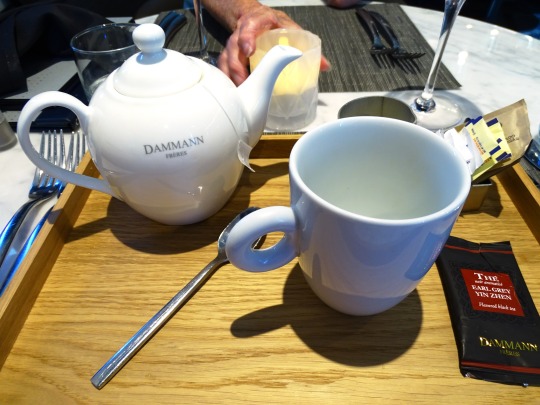
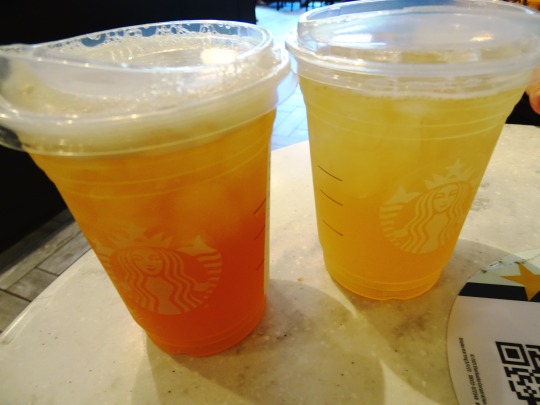
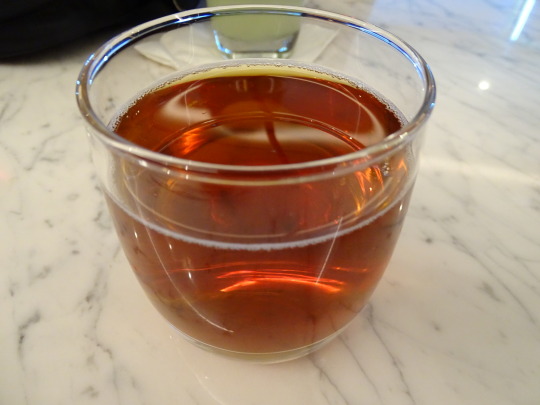






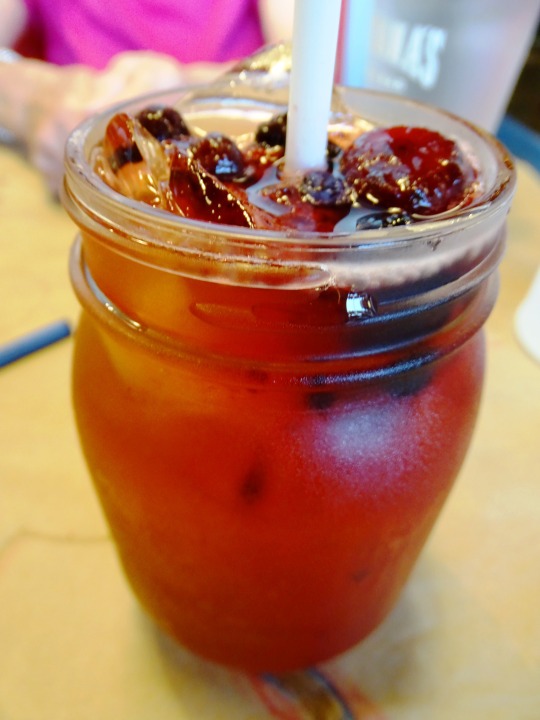


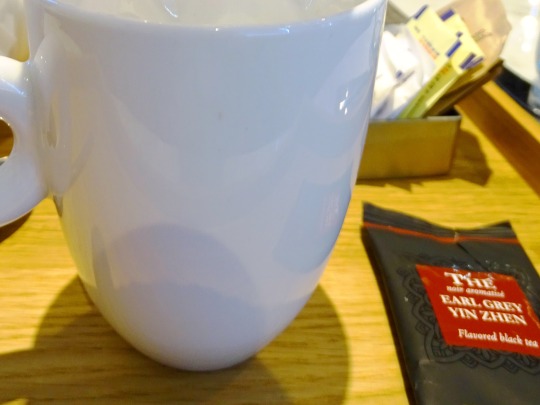


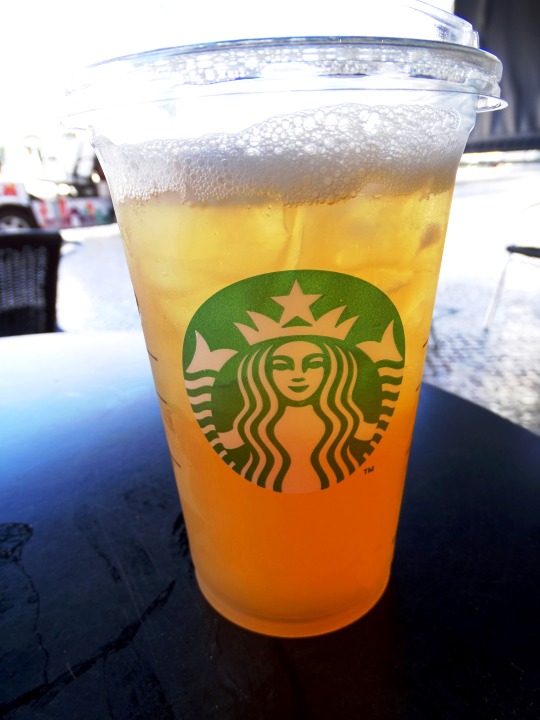
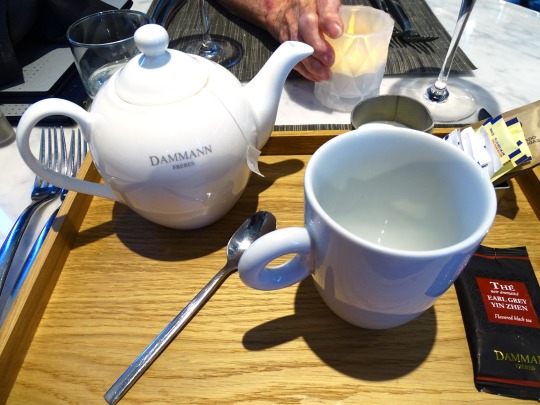






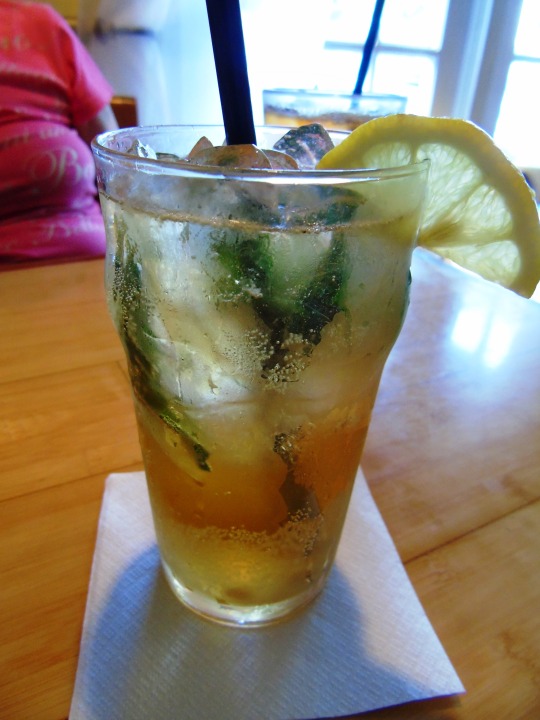




International Tea Day
While everyone loves a cup of tea, many of the workers and producers of that tea face poor conditions and pay. Help raise awareness and keep tea fair.
The tea industry provides millions of people around the world with cups of tea in the morning. One of the biggest producers of tea, India, recognizes the importance of tea in its communities and as a commodity for commerce.
However, much of the working conditions for those within the tea industry still need much improvement. If you think this holiday was about drinking tea, well think again! International Tea Day is all about the tea workers and bringing civil rights into action. Let’s see how this holiday came to pass.
Do you love a good cup of tea? While International Tea Day can certainly involve paying homage to tea, we should pay homage to those working in the tea industry. The best way to do this is by helping to raise awareness regarding their working conditions so they can be improved.
History of International Tea Day
The International Tea Day campaign was launched in 2005 by the trade unions, small tea growers and civil society organizations in Asia and Africa to address the issues of living wages for workers and fair prices for small tea producers.
The International Tea Conference in New Delhi came out with an International Declaration on the rights of workers and small growers to help regulate uneven competition, land ownership, safety regulations, rights of women, social security and living wages. Another organization, The Tea Board of India, proposed International Tea Day in hopes of it becoming an official holiday to the UN Food and Agriculture Organization.
This was proposed by chairman Santosh Kumar Sarangi in 2015. According to the chairman, the proposal of India was supported by countries such as Canada, the United States, European Union, Sri Lanka, China, Japan, Kenya, and Malawi. While the holiday doesn’t have official status, the goal of this holiday is to recognize the vulnerable situations that tea producers in India have with current living conditions and worker-related policies.
The day also focuses on deliberating on urgent issues such as residues, climate change, technology and trends on production and consumption in the tea industry. To observe this day, over 150 representatives from tea organizations gather and conduct a seminar to discuss the pervading problems the tea industry has as well as problems faced within their own country.
International Tea Day Timeline
2737 BC Tea is discovered as a beverage
Legend has it that Chinese Emperor Shen Nung is sitting beneath a tea tree while a servant boiled water for drinking. Some leaves fall into the cup and begin the practice of drinking what is now called “tea”.
1610 Tea comes to Europe
It is believed that the Dutch were the first to bring tea to Europe, just a few years prior to the introduction of coffee by Venetians.
1773 The Boston Tea Party occurs
With the intention of revolting against the high taxes levied by the British government without providing any voice, residents of Massachusetts throw tea into the Boston Harbor. “No taxation without representation” is the major complaint.
2004 International Tea Day is created
At the World Social Forum, International Tea Day is conceived and then celebrated the following years in New Delhi and Sri Lanka, then later in other tea-producing places like Nepal, Viet Nam, Bangladesh and others.
2019 United Nations adopts International Tea Day
After some years of advocating for its observance, International Tea Day is adopted by the United Nations General Assembly at the suggestion of the FAO Intergovernmental Group on Tea.
How to Celebrate International Tea Day
If you’re a lover of tea, then do some research about some of your favorite companies. Try looking up tea brands that support fair trade, and possibly switch to those brands to make a difference in the way you buy products such as tea. Use the hashtag #internationalteaday to help recognize it as an official holiday and educate others about the tea industry if you’re interested.
You could also use International Tea Day to try a variety of tea you have never had before. Matcha, for example, is highly popular as of late. You need to shop with care, though! The first thing you need to take a look at is how the Matcha has been produced and sourced.
You need to ensure that all veins and stalks have been removed so that there is not any bitterness and only the finest leaves should be used. Secondly, the color of the matcha powder is a significant factor. The greener the color is, the better. This is because the leaves are forced to overproduce chlorophyll because Matcha is shade-grown, which causes the vibrant green shade.
If the Matcha is yellow or brown in color, this is a sign that the leaves have not been properly shaded or that branches and stalks have been included. The price is the third factor to consider. Like most things, if you want quality, you can expect to pay a little bit more.
If something seems too good to be true, the chances are that it is. The feel of Matcha is also important. It should be a fine powder that is very silky. Last but not least, the taste is obviously a crucial attribute when it comes to quality. It should have a clean and naturally sweet taste.
Why not make some delicious baked green tea treats on International Tea Day and have a bake sale to raise money and awareness regarding working conditions in the tea industry? Green tea recipes are available in their abundance. People are actively searching for different ways to enjoy green tea. While green tea is delicious when simply mixed with hot water, there is nothing wrong with switching it up from time to time, especially on International Tea Day!
An easy and delicious recipe is Matcha Meringue Kisses. To make this you will need Matcha, sugar, egg whites, and powdered sugar. Begin by sifting together the Matcha and the powder sugar, and then whip the egg whites until they have soft peaks. Gradually add the sugar and whip until stiff peaks. Gently fold the Matcha into this mixture and then transfer to a pastry bag. Pipe the mixture into small kisses onto a baking tray and then bake for around an hour.
Or, why not make Green Tea Donuts? For this, you need green tea, honey, melted butter, milk, egg, salt, baking powder, sugar, and cake flour. You whisk the green tea, salt, baking powder, sugar, and flour. Add the honey, melted butter, milk, and egg, and then whisk. Use a pastry bag to pipe the batter into the mould. Then, simply bake the donuts for eight minutes. You can make your own glaze to go on the top – chocolate goes well!
Other delicious baked treats to try include green tea muffins, brownies and shortbread!
International Tea Day FAQs
What is International Tea Day?
Created to celebrate and pay tribute to the countries that produce tea to supply to the world, starting in India and moving to other places like Sri Lanka, Malawi, Uganda, Bangladesh, Vietnam and more.
When was International Tea Day first celebrated?
International Tea Day first got its start in 2004 when it was celebrated in New Delhi. It grew over the years and by 2019 the day was adopted by the United Nations General Assembly.
How to celebrate International Tea Day?
A great way to observe this day is by learning a bit more about the nations who produce tea for the world. Also, don’t forget to order a cup of fair trade tea for one, or take a friend out to enjoy a cuppa together.
What is the theme of International Tea Day?
The theme for this day devoted to tea producers changes each year, but some of the past themes have included themes such as Tea and Fair Trade or Harnessing Benefits for All from Field to Cup.
When is International Tea Day celebrated?
Taking place on May 21 of each year, International Tea Day originally took place on December 15 from 2005 when it was often only celebrated by tea-producing countries. It changed to May 21 when the UN adopted the day.
Source
#Earl Grey#Earl Grey Tea is my favorite tea#Computer tea Earl Grey hot#USA#I don't like coffee#I only drink tea#original photography#always unsweetened#Lemon Black Tea Lemonade#Tropical Ice Tea#Peach Green Tea#Lavender Ice Tea#Pineapple Black Tea#Strawberry White Tea#Peach Citrus Green Tea#International Tea Day#21 May#InternationalTeaDay#travel#vacation#Capilé#Portugal#Women are Persons By Barbara Patterson#Tea Earl Grey Hot#Spiked Texas Tea#Lemon Black Tea
2 notes
·
View notes
Text
Treadmill Market Outlook | Forecast 2024-2034
The Treadmill market report offered by Reports Intellect is meant to serve as a helpful means to evaluate the market together with an exhaustive scrutiny and crystal-clear statistics linked to this market. The report consists of the drivers and restraints of the Treadmill Market accompanied by their impact on the demand over the forecast period. Additionally, the report includes the study of prospects available in the market on a global level. With tables and figures helping evaluate the Global Treadmill market, this research offers key statistics on the state of the industry and is a beneficial source of guidance and direction for companies and entities interested in the market. This report comes along with an additional Excel data-sheet suite taking quantitative data from all numeric forecasts offered in the study.
Get Sample PDF Brochure @ https://www.reportsintellect.com/sample-request/2911451
Key players offered in the market: BH Fitness Cybex Dyaco ICON Health &Fitness Impulse Johnson Health Life Fitness Nautilus Precor Shuhua Sole Star Trac Strength Master
Additionally, it takes account of the prominent players of the Treadmill market with insights including market share, product specifications, key strategies, contact details, and company profiles. Similarly, the report involves the market computed CAGR of the market created on previous records regarding the market and existing market trends accompanied by future developments. It also divulges the future impact of enforcing regulations and policies on the expansion of the Treadmill Market.
Scope and Segmentation of the Treadmill Market
The estimates for all segments including type and application/end-user have been provided on a regional basis for the forecast period from 2024 to 2034. We have applied a mix of bottom-up and top-down methods for market estimation, analyzing the crucial regional markets, dynamics, and trends for numerous applications. Moreover, the fastest & slowest growing market segments are pointed out in the study to give out significant insights into each core element of the market.
Treadmill Market Type Coverage: - Single Function Treadmill Multifunctional Treadmill
Treadmill Market Application Coverage: - Home Commercial
Regional Analysis:
North America Country (United States, Canada) South America Asia Country (China, Japan, India, Korea) Europe Country (Germany, UK, France, Italy) Other Countries (Middle East, Africa, GCC)
Also, Get an updated forecast from 2024 to 2034.
Discount PDF Brochure @ https://www.reportsintellect.com/discount-request/2911451
The comprehensive report provides:
Reasons to Purchase Treadmill Market Research Report
Covid-19 Impact Analysis: Our research analysts are highly focused on the Treadmill Market covid-19 impact analysis. A whole chapter is dedicated to the covid-19 outbreak so that our clients get whole and sole details about the market ups & downs. With the help of our report the clients will get vast statistics as to when and where should they invest in the industry.
About Us: Reports Intellect is your one-stop solution for everything related to market research and market intelligence. We understand the importance of market intelligence and its need in today's competitive world.
Our professional team works hard to fetch the most authentic research reports backed with impeccable data figures which guarantee outstanding results every time for you.
Contact Us: [email protected] Phone No: + 1-706-996-2486 US Address: 225 Peachtree Street NE, Suite 400, Atlanta, GA 30303
#Treadmill Market#Treadmill Market trends#Treadmill Market future#Treadmill Market size#Treadmill Market growth#Treadmill Market forecast#Treadmill Market analysis
3 notes
·
View notes
Text
"In May 2023, India and Israel signed a new bilateral agreement to bring forty-two thousand additional Indian laborers to Israel. Modi’s most recent agreement with Netanyahu aims to fast-track current plans even more, lifting restrictions to hasten migrant workers’ entry into Israel. The temporary, low-wage migrants from rural and small-town North India, some of the poorest regions in the country, are desperate for decent employment—so desperate that they’re willing to work for a regime that is actively engaged in what the International Court of Justice has called a “plausible genocide.” They’re seeking paid work they’ve failed to find within India’s growing but deeply unequal and caste-bound economy. Bilateral deals like the one between India and Israel give off the sheen of newness, appearing to be the products of a twenty-first century age of hypermobile capital. But in fact, the two countries are dusting off a time-worn strategy from the colonial archive: importing and exporting racially marked temporary labor to manage political and economic problems in one fell swoop."
....
Bilateral mobility agreements like the India-Israel deal are nothing new. Across the world, more and more states—Singapore, Bahrain, Canada, and the United States among many others—have begun to employ temporary, closed-term migrant labor programs. In the Middle East, autocratic Gulf states have long relied on such schemes. And in addition to contracting Palestinian labor, Israel has long relied on Thai, Filipino, Nepali, and Indian workers, too. Typically, these states have two goals. On the one hand, they want to preserve the ethnic composition of a privileged national citizenry. On the other, they need large amounts of cheapened laborers, especially in the domestic, construction and retail sectors, to grow. Contract labor schemes have allowed them to do both: with them, states can access a mass supply of workers without having to grant any of them citizenship. Israel, for example, offers five-year, temporary immigration channels for migrant workers, but gives them no option for family reunification or naturalization.
...
The Modi-Netanyahu labor deal has an even older historical predecessor: British indenture. In the nineteenth century, as chattel slavery came to an end in Britain, indentured labor from countries such as India and China was introduced as a more “humane” alternative. The practice was abolished in 1920, but a century later, traces of its institutional legacy live on in migrant labor programs. Indian and other Asian workers were desirable across the Gulf region because they were seen as politically “docile,” a powerful racial trope with particular roots in nineteenth-century indenture practices. They were also desirable because, as sociologist Andrzej Kapiszewski notes, “Asian governments became often involved in the recruitment and placement of their workers, facilitating their smooth flow to the Gulf countries.” The governments of India, Pakistan, and the Philippines, lured by the healthy remittances promised to them, were all too eager to help in the importation of their workers.
...
If modern states have ensured the brutal subjugation of both populations living, and workers laboring, in their borders through colonial means, then the resistance to those tactics must be anticolonial in response.
2 notes
·
View notes